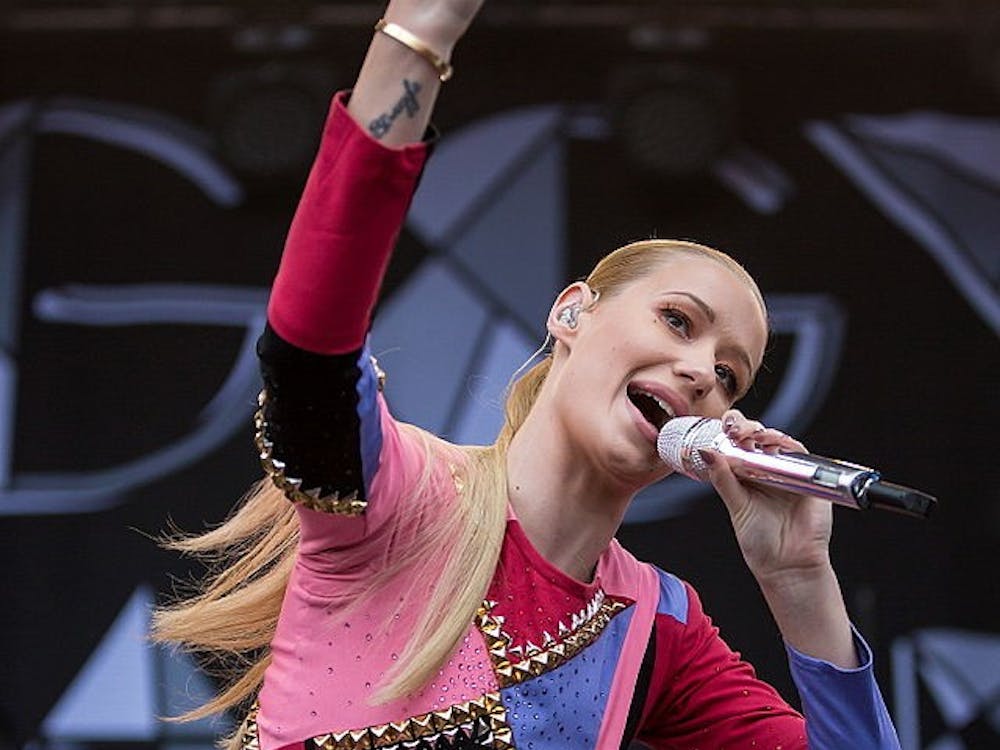Displaying more than just famous faces of a bygone era, the Bayly Art Museum's latest exhibit, "Beauty or Truth: Hollywood Photographs by Clarence Bull, George Hurrell, and Weegee," raises questions about sexuality, race and even the honesty of the images themselves.
This intriguing but highly problematic exhibit features 30 photographs taken during the rise and fall of the Hollywood golden age. Bull and Hurrell were rival publicity photographers at MGM studios during its Depression-era heyday. Their images did not come about by chance: The photos are strictly manipulated, with precisely positioned lighting and subjects placed in contrived poses with heavily made up faces.
Thanks to detailed information in the caption to each piece, viewers learn about additional techniques used to enhance the images. For instance, Hurrell used lead retouching after he developed his photos to lighten the irises of the stars' eyes. With all of this tinkering, viewers are correct to wonder if glamour is merely an illusion.
The exhibit seeks to answer this question by juxtaposing the gritty work of the photojournalist Weegee (real name Arthur Fellig). Rather than becoming the missing link in the exhibit, Weegee's work appears more as a sidebar. Because most of his work is from the 1950s, it's difficult to understand his relationship to pre-World War II Hollywood.
Underneath the glamour, the photos reveal disturbing truths about racial representation in '30s cinema. For example, a Bull publicity shot for the film "The Son Daughter" shows Helen Hayes, a white woman, and Ramon Navarro, a Hispanic man, playing the roles of Chinese lovers - both wearing a good deal of makeup to look the part. Similarly, a Hurrell image portrays Wallace Beery, a mid-Westerner, as the famous Mexican outlaw Pancho Villa. According to the exhibit, with these works "truth seems confused with beauty."
The exhibit also raises gender issues with the images of famous actresses from the '30s. With a series of shots from Garbo's film "Queen Christina" as well as a study of Joan Crawford portraits, the exhibit's explanations discuss the "semi-feminist, semi-subservient" role of women in '30s cinema. Instead of looking at this duality as the result of an age caught between two major phases of the feminist movement, the exhibit refers to the subjects as "sexually ambivalent." This wording is borderline offensive: Instead of championing the sexual progressiveness of the Hollywood stars, it labels them as male/female hybrids.
Despite the detailed descriptions and explanations of each work, "Beauty or Truth" has a few oversights. A few of the images are not dated, an error that becomes particularly distressing in the study of Crawford, who supposedly changed her appearance every year. The viewer is unable to track the progression of these changes, as only one of her portraits is dated.
On one wall is a line from Yeats' poem "Adam's Curse": "we must labour to be beautiful." Along with quotations from the likes of Ovid, Weegee and the stars themselves, this epigram furthers the issues raised by the images. In this and other instances, the photographs, their captions and accompanying citations come together to create an exhibit that looks to expose what lurks beyond a pretty face.






